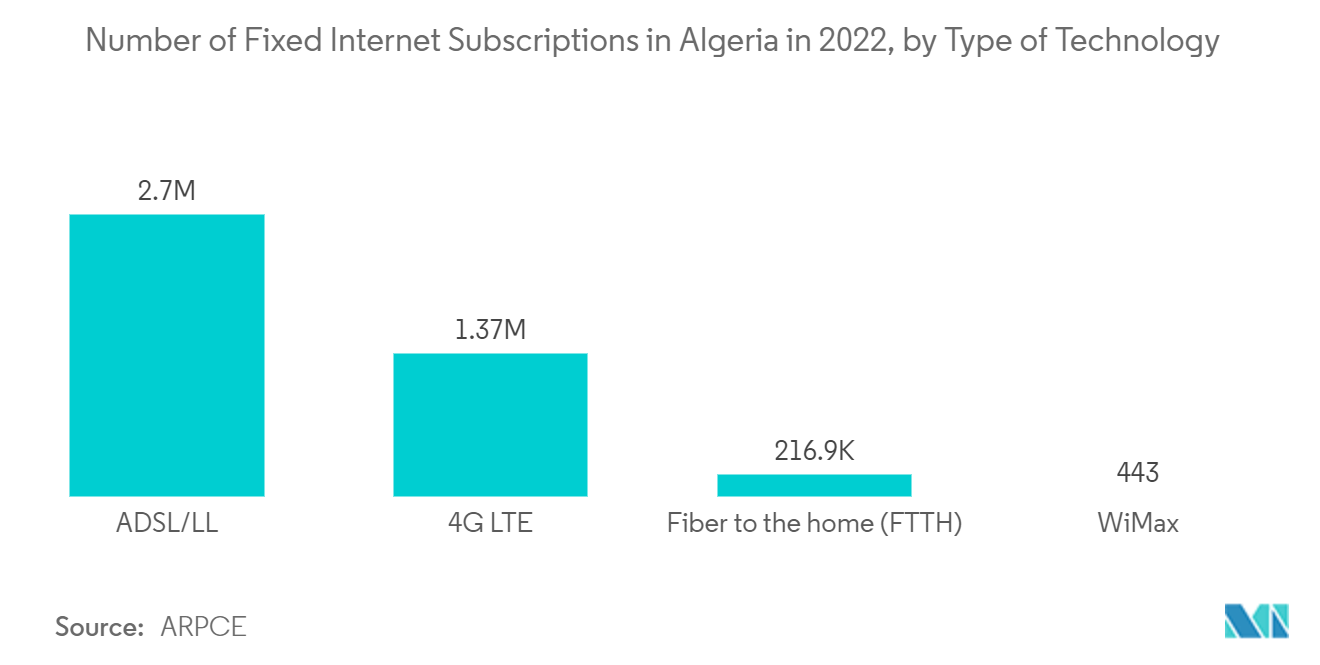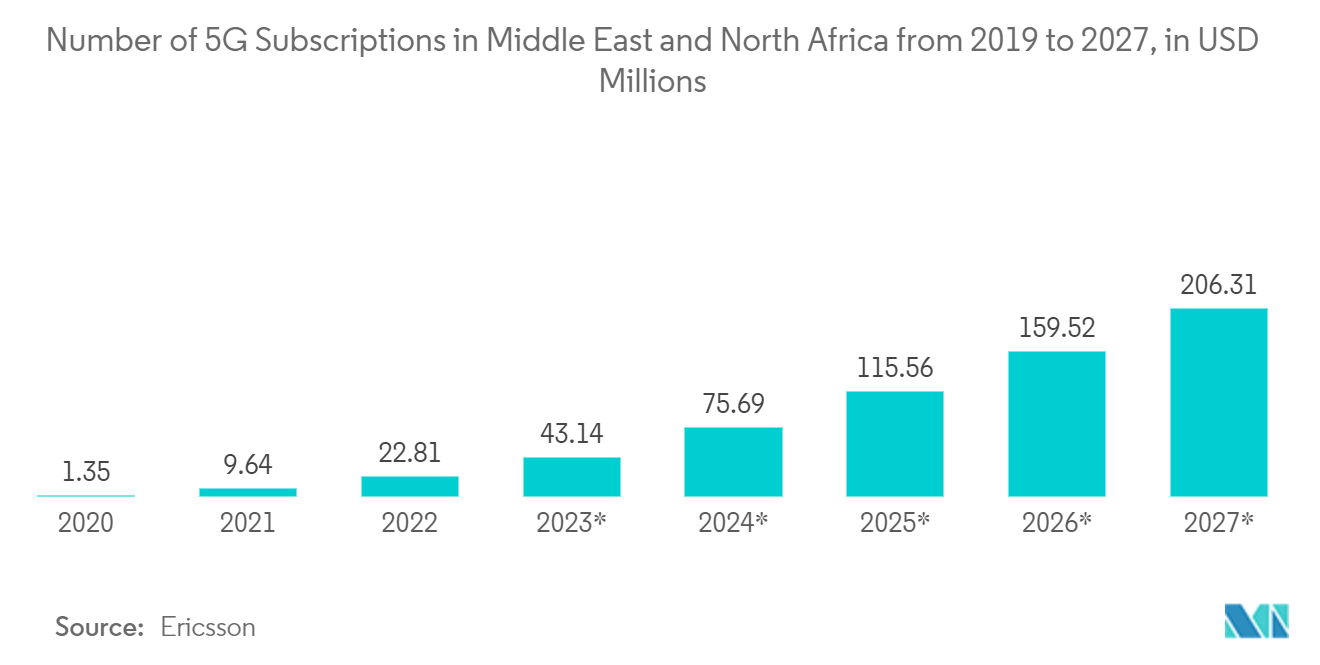Market Trends of Africa Small Cell Industry
Outdoor to Have Significant Share
- A tiny cell is linked to the main mobile network via the internet, either through the cloud indoors or wirelessly outside, utilizing broadband technologies. This strategy aids in preserving optimal coverage and capacity across both the current fourth-generation (4G) LTE networks and the developing 5G networks.
- Increasingly, small cell technologies are enabling the densification of outdoor networks rather than only providing coverage inside structures like arenas or buildings. Every significant communications service provider (CSP) has stated ambitions for network densification, and several have even begun integrating tiny cells into their networks. Such circumstances are likely to encourage the installation of a tiny cell in an outdoor setting.
- Also, networks grow to satisfy the demand for better and quicker coverage as 5G services and devices see an increase in demand. Small outdoor cells are therefore an essential component of these service-improving deployments.
- As transmission resources are a key bottleneck for the deployment of small outdoor cells across densely populated urban areas, it is, therefore, difficult to achieve wired transmission for all sites across the region.

South Africa is Expected to Witness Significant Growth
- The Africa region is growing in terms of 5G deployment and strategic partnerships with global small cell companies, which are significant drivers for the market in the area.
- Vendors in Africa are working to increase mobile network coverage, which will drive demand for the small cell market in the region. Vodafone is actively trialing open RAN technology in Mozambique and the Democratic Republic of the Congo to broaden its potential base of suppliers and extend rural Internet access.
- In addition, various global companies are stepping into the country to drive 5G experiences for consumers by creating a dense environment for indoor coverage with the required speed, capacity, and low latency.
- The growth in private networks in the region is also a significant trend that is assisting in the development of the market in the area. A private network uses a localized network infrastructure using small cells to provide coverage and connectivity for private use.


